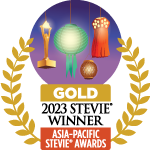
Time is of the essence, especially in the world of support where companies are always racing against it. Every time customers contact the support desk with a problem, they want an instant resolution. If you fail to live up to their expectations then the onus of customer churn is on you because 67% of consumers cite bad experiences as a reason for churn — that’s certainly a blip on the competitive radar. This is precisely why support agents strive to proactively and effectively resolve customer queries. But, how do you quantify their efforts to ensure that your support team is on the path to success? This is where time to resolve (TTR) comes into the picture.
Fun Fact: Unless you want to potentially lose about 80% of your business, you need to stay on top of your customer service performance.
What is Time to Resolution?
Used interchangeably with ‘Mean Time to Resolution (MTTR)’, Time to Resolve or Resolution is the average time that has elapsed from when a customer ticket was first reported until the time it was resolved. Typically, this metric is not measured in clock hours but in official business hours, simply to compensate for any organizational downtimes.
For instance, if a customer query comes in on Saturday at 8:00 PM EST and is resolved on the following Monday by 11:30 AM EST, then the TTR would be 1.5 hours. This is because the business (operating) hours are from Monday to Friday (10:00 AM- 7:00 PM EST), and Saturday being a holiday will not be considered while calculating the MTTR.

Source : https://www.profit.co/
Why Does Time to Resolution Matter in Customer Service?
Remember the adage, ‘time is money?’ This is why it is crucial for you to understand how efficiently your support agents are handling complaints and what’s slowing them down. Thanks to TTR for being a key indicator of team efficiency. Companies measure TTR on an average along with a per-employee basis which helps them to identify underperforming employees. Although it’s a handy shorthand for the overall customer experience, you should also take into account first response time and waiting times.
CSAT is inversely proportional to TTR. Understandably, any delay in replies would only frustrate a customer more. Having established that, you should not cut corners with a temporary workaround because in the end, TTR is about quantifying the time taken to reach an acceptable resolution and not just any arbitrary response.
Remember: a quick and fast response that is irrelevant or incomplete only aggravates the bad experience.

How Cognitive Technology Helps to Reduce TTR?
Every organization wants to leverage automation to accelerate its workflows and subsequently improve customer service. Given below are a few tried and tested ways on how cognitive technology helps curb TTR without cutting corners or rushing your customers:
1. Empowers Support Agents to Resolve Queries Faster
The rapid advancement in technology has empowered customers like never before. As a result, they don’t hesitate to demand more. But to cater to the demands of the customers, organizations today need to empower their agents with means to deliver relevant and correct information every time a customer asks for it. Luckily, with intelligent apps built on the cognitive framework by your side, your agents get the required edge they need. SearchUnify’s Agent Helper is one such application.
It enables organizations to glean actionable and robust insights by providing a unified view of information on top articles or similar cases from the past. What’s more, the app provides a hawk-eyed view of the customer’s journey by rummaging through historical data prior to case creation. Doing so, enables the agents to provide new and relevant solutions as opposed to reiterating what the users have already tried. Hence reducing turnaround time and elevating CSAT.
2. Analyzes User Sentiments to Generate Relevant Solutions
Support agents can only handle a limited number of tickets in a day and can only talk to one customer at a time. Understandably, humans tend to have inherent downtimes like working hours, leaves, short breaks — we all deserve one! But while agents might feel overburdened or get tired, a virtual assistant obviously won’t. These ‘always-on’ chatbots provide 24/7 assistance to customers and solve L1 queries in a jiffy while mirroring human-like interactions. Isn’t it amazing? As a result, your support agents can focus on more complex tasks while the AI-bot handles simpler ones.
Chatbots that leverage AI, ML, and NLP possess the ability to learn from historical data. Another interesting feat for these chatbots is they can infer customer intent by rummaging through user profiles, ticket history, and any correlated data. This means they have insights on customer behavior consolidated from different channels. Additionally, they are capable of rendering the most relevant case resolving content while keeping the conversations personalized at scale. Want to chat-a-bot it? Try SearchUnify’s Intelligent Chatbots!
This Gartner report states, “Machine learning, natural-language understanding, and natural-language processing can help analyze customer sentiment and customer feedback at scale.”
3. Triages Incoming Support Tickets Intelligently
Imagine the level of customer frustration if you keep transferring them from one agent to another for a relevant resolution. The burning question here is how do you allocate a complaint to the most suitable agent from the get-go? Again, cognitive technology comes to your rescue. Integrate cognitive-fueled apps like Escalation Predictor to your ticketing system and get rid of the round-robin approach.
Escalation Predictor facilitates intelligent routing by analyzing a multitude of factors, including customer journey and their sentiments to prioritize cases accordingly. Thereafter, it forewarns agents regarding the likelihood of escalations so that they can nip the problem in the bud.
The best part is, an intelligent triaging system factors in the agent’s expertise whilst assigning tickets. Once Escalation Predictor has been fully incorporated into your support organization, incoming cases are assigned to the most appropriate agents right off the bat instead of treating the support ticket as hot potatoes. This leads to accomplishing a higher CSAT and a reduced MTTR. What’s not to like?
4. Aids in Building a Robust Support KB
Support agents often struggle to find relevant help content at the right time to resolve customer queries. Naturally, the more time it takes to find the right content, the longer will be the time to resolve. Hence, building a robust KB becomes a pressing priority. Once the agents have relevant information at their disposal, they can quickly resolve customer queries and reduce TTR, by extension.
Creating KBs should be a simultaneous process where knowledge is captured during the interaction, not retrospectively. However, while solving a case, agents have to juggle multiple tasks. The last thing they would want is to capture the case details that can further be used for reference. This is where smart applications like KCS Enabler come into play. It populates new articles as a by-product of the agents’ resolutions for undocumented issues. It is indeed an incredible way to inculcate KCS in agents’ workflows.
“Knowledge is like a garden: if it is not cultivated, it cannot be harvested.”
Strike The Perfect Balance Between Speed and Quality
If you wish to get ahead in the game then it’s about time you pay heed to reduce Time to Resolve while maintaining the quality of your customer service. Combine the capabilities of your support staff with intelligent applications to create an invincible support mix.
Having said that, if you’re just starting out and would love a walk-through on how to effectively resolve customer queries without compromising on the service, then this eBook would be worth your while. On the other hand, if you’re looking for AI-powered apps that align with your organizational goals then request a live demo, today!














